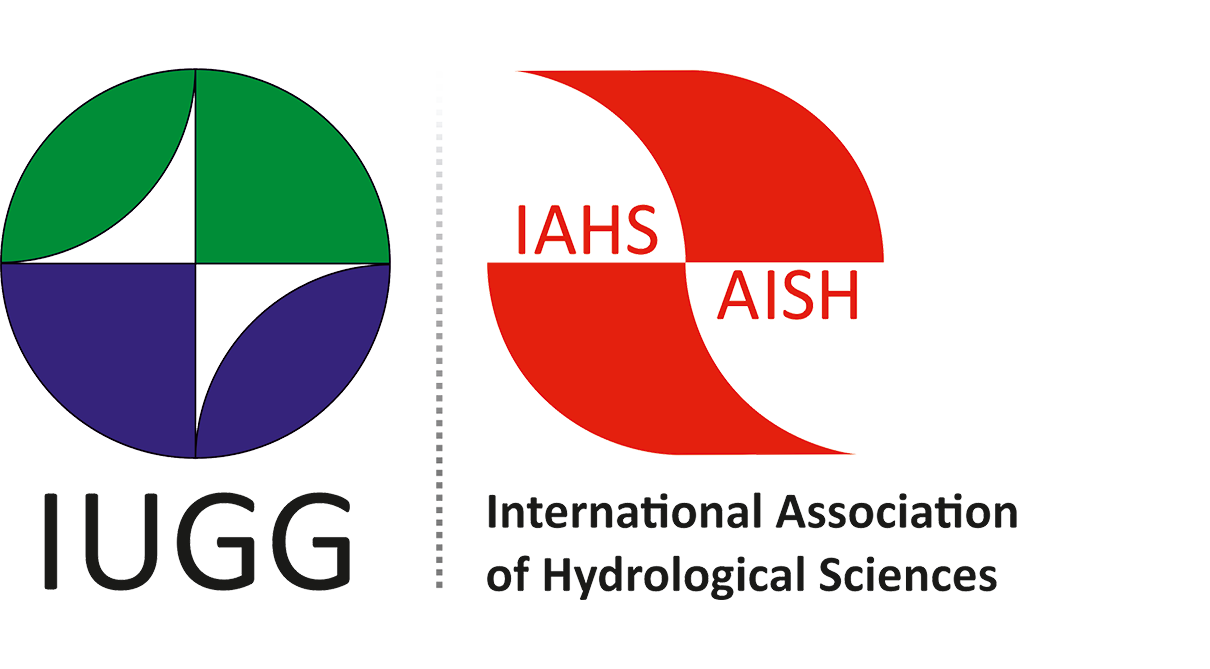Tison Award 2003
The laureates together with the President of the Jury in Sapporo, July 7th 2003. From left to right : Taikan Oki, Shinjiro Kanae, Yasushi Agata, Takao Saruhashi, Zbignew Kundzewicz and Dawen Yang in Sapporo, July 7th 2003.
Citation by Dr Z.W. Kundzewicz
Ladies and Gentlemen: In the name of the IAHS Panel responsible for selecting a winner of the 2003 Tison Award, I am pleased to convey our decision and the citation. After having examined three candidate papers submitted for nomination, the Panel, consisting of Dr Jayawardena (Hongkong), Dr Kavvas (USA) and myself, acting as Chairman, agreed that the winners of the 2003 Tison Award are: Taikan Oki, Yasushi Agata, Shinjiro Kanae, Takao Saruhashi and Dawen Yang. These five young Japanese hydrologists have co-authored, jointly with Professor Katumi Musiake, the winning paper: Global assessment of current water resources using total runoff integrating pathways published in the volume 46 of the Hydrological Sciences Journal in 2001. Oki et al. assess the global water resources, their availability and use. Even if the issue is of considerable global concern, and the 21st century has been baptized as the age of water scarcity, there are few global estimates of water resources at present. Oki et al. develop a new methodology for the global assessment of water scarcity, in the supply and demand context. Water scarcity over each cell of the 0.5o X 0.5o grid is estimated as a ratio of annual water demand divided by the annual water availability. For the calculation of water demand, municipal and industrial water use are assumed to be proportional to the population size, and the agricultural use is assumed to be proportional to the irrigated land area. A global GIS is developed to convert country-based statistics into grid-based global distributions. For estimating the runoff, the Land Surface Model outputs are used to calculate the global river discharge. The water availability over each grid area is calculated as a sum of the runoff from lands that are adjacent to the river network within a grid area, using the average of ten different land surface model predictions. This is a novelty. Another innovative element is that the river discharge from upstream grid areas is weighted by an accessibility coefficient, i.e. it is not assumed that all the water from an upstream reach can be potentially available for usage in the downstream reach. Oki et al. demonstrated weaknesses of the present assessments and sketched a way to improve the accuracy in further studies, which would also deal with future projections. In the nomination by the Japan IAHS National Committee, there is a statement that this paper endorses the international reputation of the Hydrological Sciences Journal as well as promotes the ability of hydrological science to utilize their knowledge to socially relevant problems. We agree with this statement, and wish to inform you that the last, June 2003 issue of HSJ contains a set of two papers by Alcamo et al. providing further valuable contribution to this topical area and referring to the winning paper. The Tison Award consists of a diploma, a cheque for USD 1000, and a personal subscription of HSJ over one year. Each of the 2003 Tison Prize winners receives a copy of the diploma and the subscription. The monetary part of the Award will be shared among all five eligible authors. Let me express the hope, in the name of the Nominating Panel, and in my own name, that the Tison Award, and the HSJ subscription, will firmly attract these five young scientists to the IAHS and the HSJ in the future. A personal remark at the end. In 1987 I was honoured and pleased to receive the first Tison Award. This success played quite an important role in the development of my scientific career. Dr Z. W. Kundzewicz (in the name of Dr Jayawardena and Dr Kavvas)
